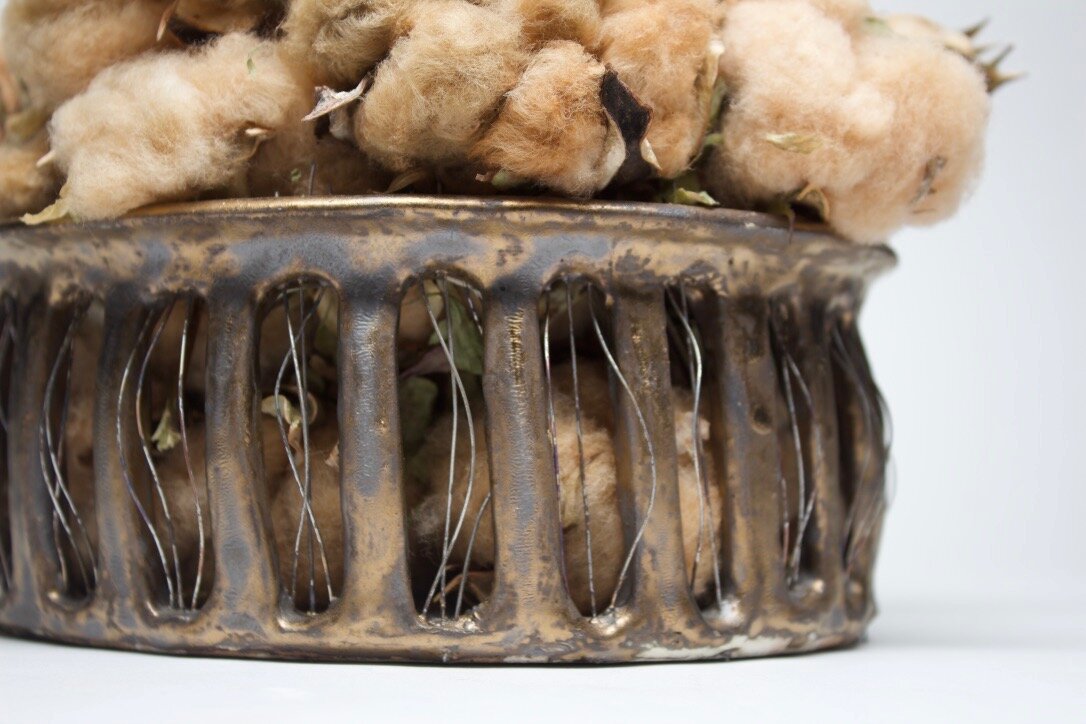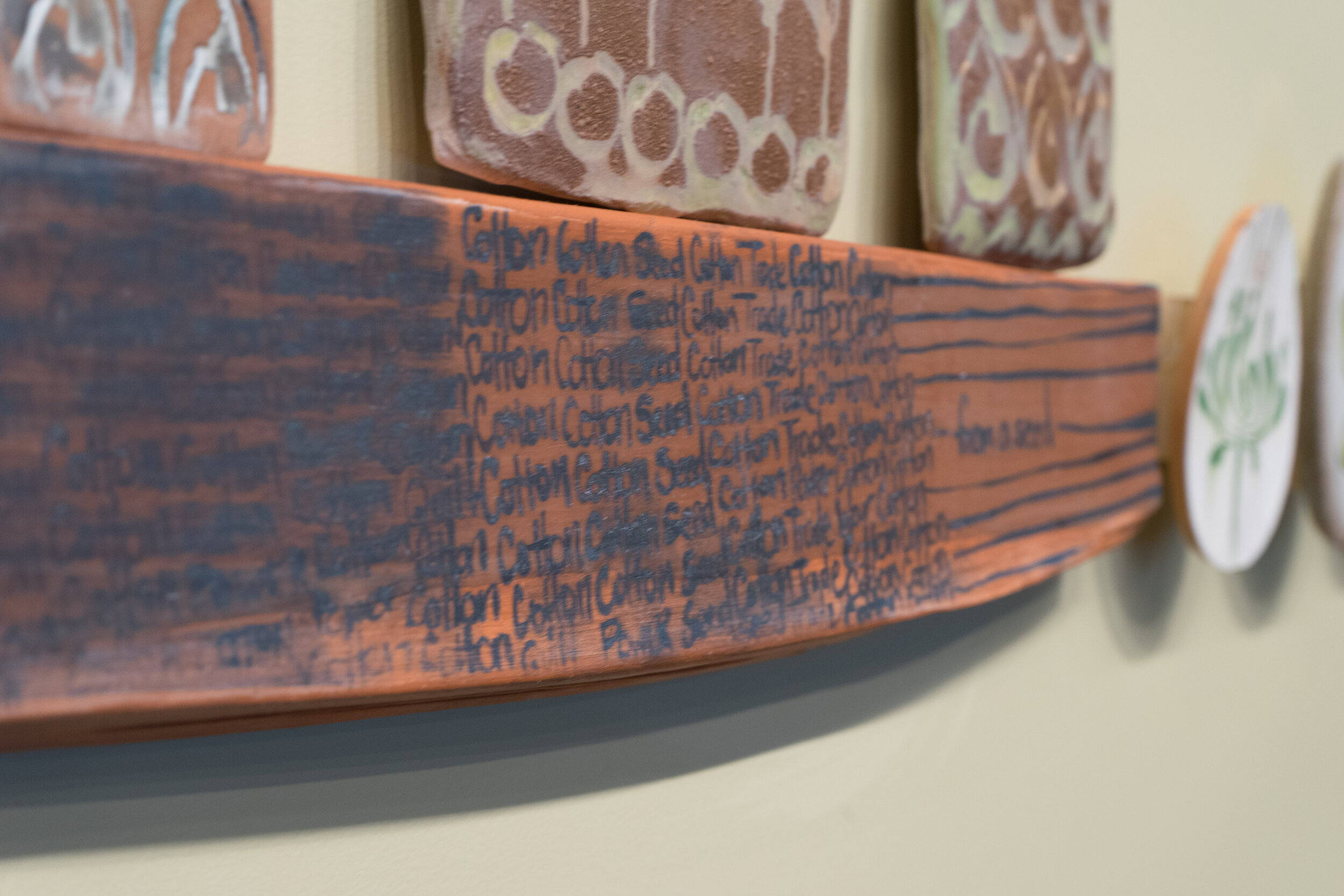Trading Post: Huys de Hope
January 16 - February 20
This exhibition is part of the 2019-2020 Visiting Artist and Scholar series at the School of Visual Art and Design. Chotsani Elaine Dean is an Artist and Assistant Professor of Art, Ceramics at the South Carolina School of the Arts at Anderson University.
Public Lecture: January 15, 6:00 pm, MM 214
Opening Reception: January 16, 5 - 7 pm, Artist’s Talk at 6:00pm, McMaster Gallery.
Artist’s Statement:
The many, complex layered realities of the history and visual archives of my communal ancestry form and impart creative purpose in my studio practice and research. Foremost in my research are quilts from Slavery (chattel enslavement) thru Antebellum periods, made on and off of cotton plantations by enslaved and free blacks, through mid-20th century, serve as the visual point of departure I use to explore and connect with this difficult and dreadful time in American history. The quilts of these periods are of particular interest to me for their uniqueness of origin, evolution, aesthetics and range of techniques and processes. Even more, I have a personal devotion and connection to the lives of the quilters, people and intersecting events of this time. Quilts from these time periods reveal a distinct historic blending of aesthetics, material culture, traditions and innovations of early America via the Atlantic Slave trade and effects of colonization.
The visual and historical synthesis of various craft traditions, historical events and commodities; quilts, the cotton trade, Civil Rights Movement and the vast realm of Textiles, inform and shape my visual ideas and approach to the spectrum of ceramic material. Experimentation in glaze chemistry is a primary focus of my studio practice. I am interested in creating, exploring and employing diverse ranges of glazes, firing temperature as well as various clay bodies and colored slips, allowing me to create formal visual dynamics that embody the myriad of visual elements and categories of quilts I have surveyed. It is intentional that the individual tiles and groupings are not repeated. I mix and compose the different tiles to express the various visual modes, traditions and language of quilts and greater realm of textiles.
Adaptation, resourcefulness, survival and triumph, are what I appreciate when I consider the fullness of these quilts, their makers and the history from which they emerge and have moved through time. Cotton, the commodity at the center of my ancestry, by way of its production and trade, lead me to the global history, trade and impact of textiles. Encountering the various cultures and time periods cotton has affected, influence my work, taking me on non-linear timeline journeys through history. Each unique tile within the quilts and various works I create are informed by the diverse and inter-connected visual history of quilting and textiles. My work begins with the realities of those who sewed and stitched more than quilts; those who stitched and sewed a resolute history and legacy that has gifted freedom, personhood and rich visual language to our world. It is the fullness of this important history to which I am indebted and has afforded me deep meaning as an artist. I strive to sustain and honor the many gifts of my personal and collective history embed in the visual chronicles of my communal ancestry.



